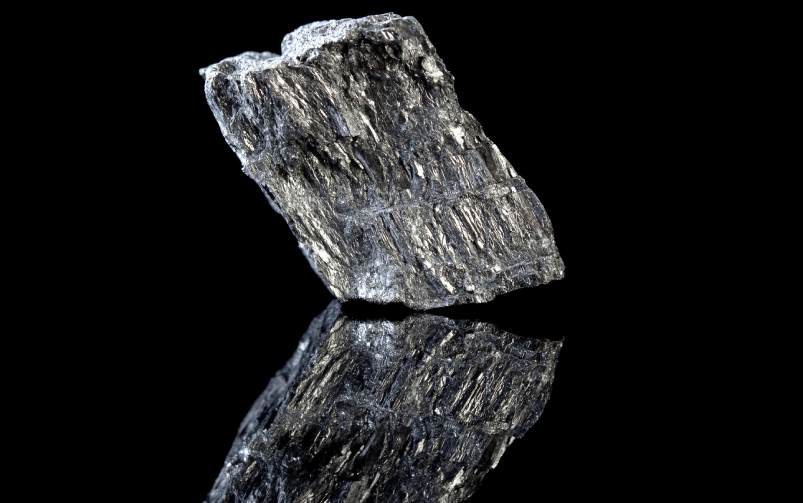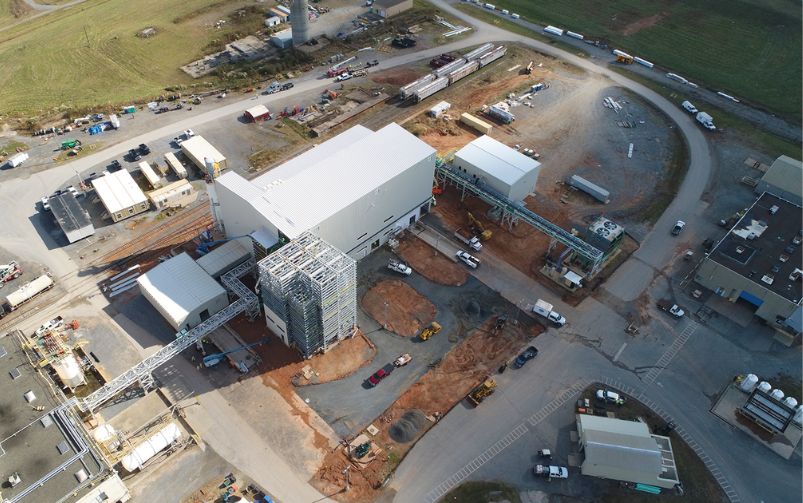Electra Battery Materials has sent its first customer shipment of nickel-cobalt mixed hydroxide precipitate product, which was made at its hydrometallurgical refinery in Ontario. Courtesy of Electra Battery Materials.
Welcome back to your weekly mining news recap, where we catch you up on some of the news you may have missed. This week’s headlines include the Mining Association of Canada launching a subscription service that enables companies to disclose sustainability data, Electra Battery Materials’ first shipment of its recycled nickel-cobalt product and the criteria for Canada’s Strategic Innovation Fund is out now.
Clearing the backlog of shipments at British Columbia ports hit a snag this week. Although a tentative agreement was reached between the International Longshore and Warehouse Union (ILWU) and its employer last week and port operations began again on July 13, on July 18 the ILWU stated its leadership caucus voted down the mediator’s terms and it resumed strike action, as reported by The Canadian Press. On July 19, the Canada Industrial Relations Board deemed the renewed strike action unlawful because the union had not given adequate notice and the port workers went back to work. ILWU representatives will vote today whether to send the proposed contract to union members for ratification.
Artemis Gold announced on Monday that an uncontrolled wildfire late last week in the “immediate vicinity” of its Blackwater mine in central B.C. left minimal damage to the property and that there were no injuries. The company stated that the Blackwater mine site infrastructure remains intact, and it does not anticipate the incident will have a material impact on the Blackwater construction schedule. It is currently “focused on ramping back up to normal construction activities in the short term, subject to provincial regulation” and the first gold pour for Blackwater remains scheduled for the second half of 2024.
The Canadian government is expected to release a plan by the end of this year to streamline permitting for mining projects, as reported by Bloomberg. The plan is intended to help accelerate the production of critical minerals in Canada to keep pace with the U.S. while also toppling China’s dominance in the sector. Currently, deposits of key minerals take anywhere between five and 25 years to be developed into an operating mine.
The Mining Association of Canada (MAC)’s Towards Sustainable Mining standard, which focuses on improving environmental and social practices in the mining sector, has launched a new subscription service. MAC stated the new service will help mining companies publicly report on sustainability data. Ioneer, an emerging lithium-boron producer, is the protocol’s first subscriber. In Ioneer’s next ESG report, which will be released in September, it will publicly report on its performance on the standards’ eight protocols, some of which include climate change, Indigenous and community relationships and safety and health.
The criteria was released for critical minerals projects eligible to receive funding from Canada’s Strategic Innovation Fund (SIF). The $1.5 billion in funding outlined in Budget 2022 will be allocated to projects that focus on critical mineral processing, manufacturing and recycling, as well as “mining projects that show exceptional innovation benefits and strong vertical integration to grow domestic value chains,” according to a press release from the Canadian government that accompanied the announcement. The projects must target one or more of the 31 minerals Canada has named as critical minerals. Eligibility details can be found online, along with instructions on how to apply.
CIM’s Management and Economics Society hosted a webinar last week by mining lawyer Fred R. Pletcher on recent transactional and legal trends in the mining industry. Pletcher identified four major trends that have defined the global mining industry recently: consolidation, environment, social and governance (ESG)-driven transactions, Indigenous consultation and resource nationalism.
Electra Battery Materials stated it shipped its first customer order of nickel-cobalt mixed hydroxide precipitate product (MHP), which is made from recycled battery material, on Monday. The nickel-cobalt MHP was created at its hydrometallurgical refinery in Ontario as part of its black mass recycling trial, which was launched at the end of 2022. Electra did not state the name of the customer or the size of the shipment.
Mineral development company Avalon Advanced Materials and processing technology company Metso have signed a memorandum of understanding (MOU) to develop a lithium hydroxide production facility to process lithium mineral concentrates in Thunder Bay, as reported by Canadian Mining Journal. The MOU stated that Avalon will license Metso technology to produce lithium hydroxide cathode materials. A definitive agreement is expected to be reached between the companies on or before Sept. 1.
Champion Iron’s direct reduction pellet feed (DRPF) project at its Bloom Lake iron ore complex in Quebec is making strides and is anticipated to be completed by the second half of 2025, wrote Silvia Pikal in the August issue of CIM Magazine. Champion Iron added $52 million to the initial budget of $10 million for the construction and engineering of its DRPF project, which aims to produce one of the world’s highest-purity iron ore products, which can be converted to direct reduced iron (DRI) pellets and used as feedstock for steelmaking without the use of coal. The total cost of the project is estimated to be $470.7 million.
The mining industry will have to fill a high number of job vacancies in the next decade, but the gradual decline of students in mining engineering programs since 2016 is cause for concern, wrote engineering geologist Davide Elmo in the June/July issue of CIM Magazine. To combat the problem, Elmo argued that academia and industry need to emphasize the “interdisciplinary nature and transferable skills of a mining engineering degree and the wide range of opportunities available.”
That’s all for this week. If you’ve got feedback, you can always reach us at editor@cim.org. If you’ve got something to add, why not join the conversation on our Facebook, Twitter, LinkedIn, or Instagram pages?




